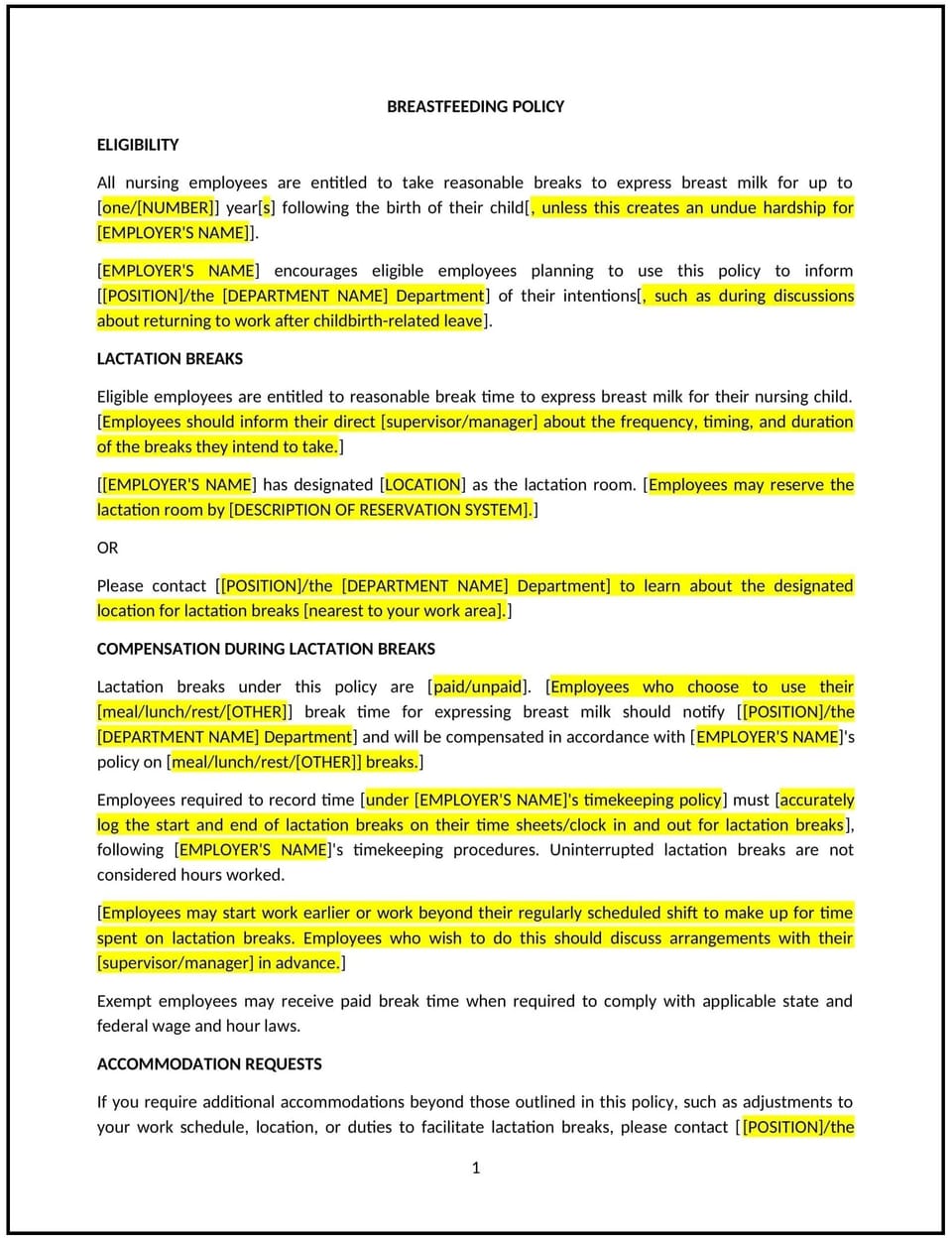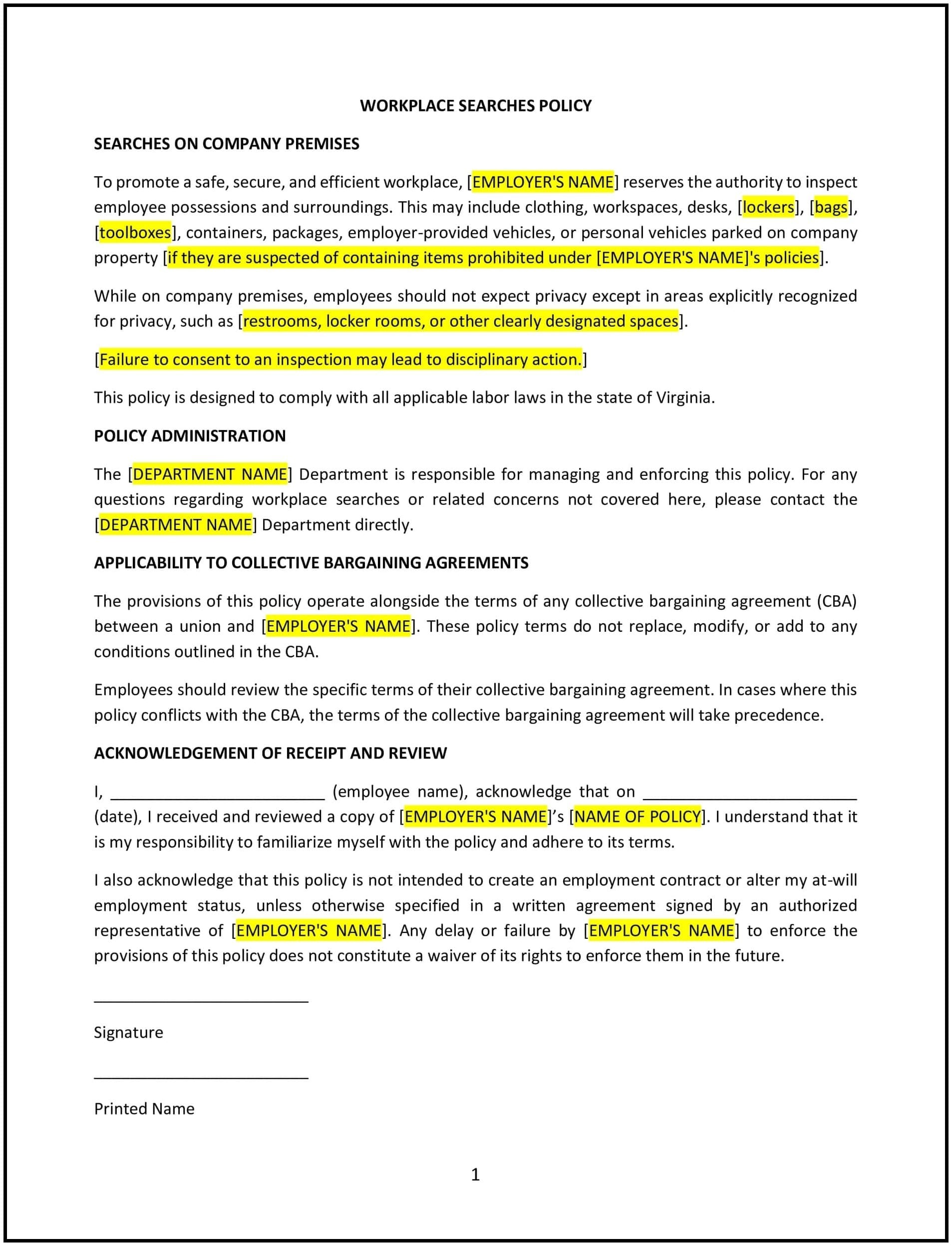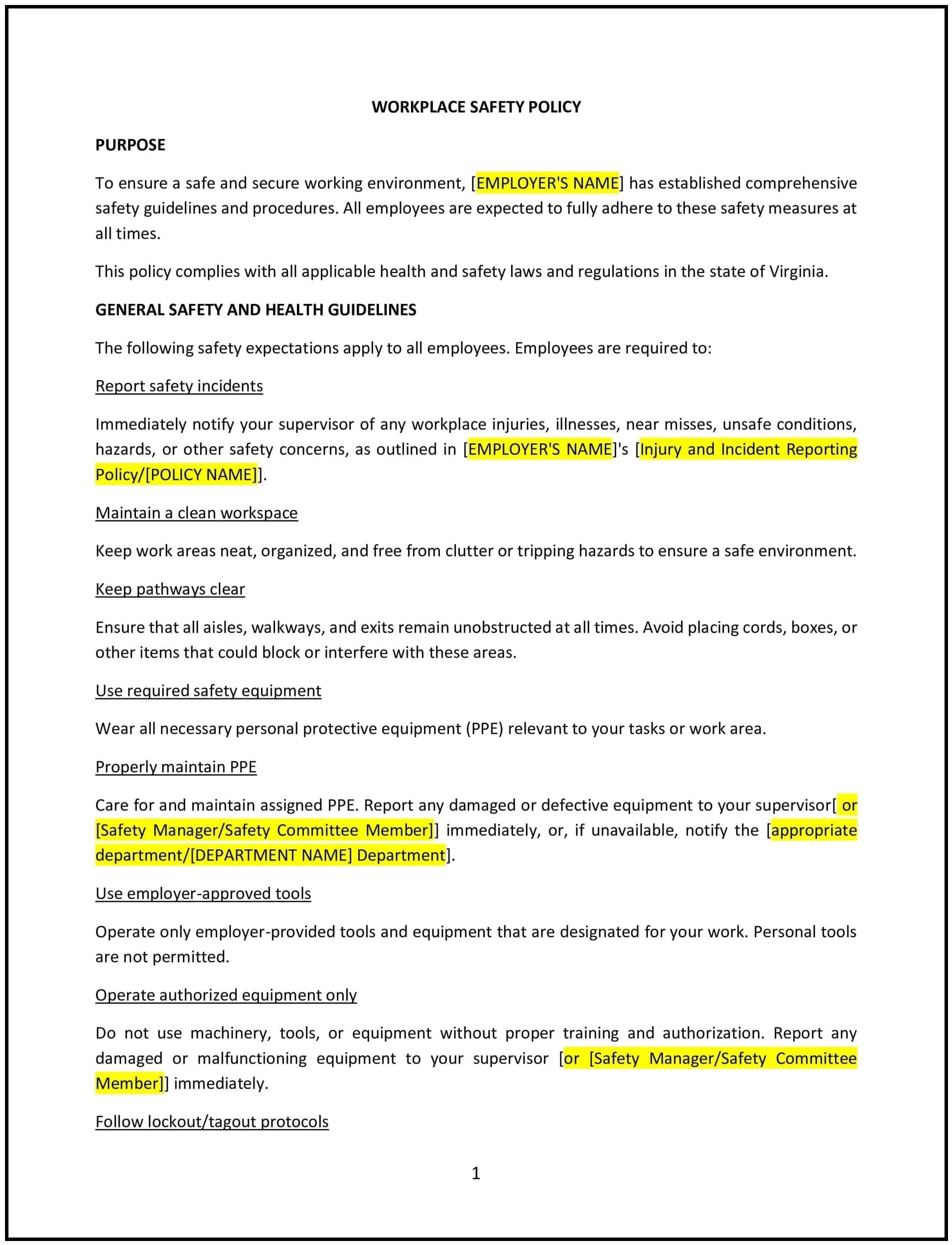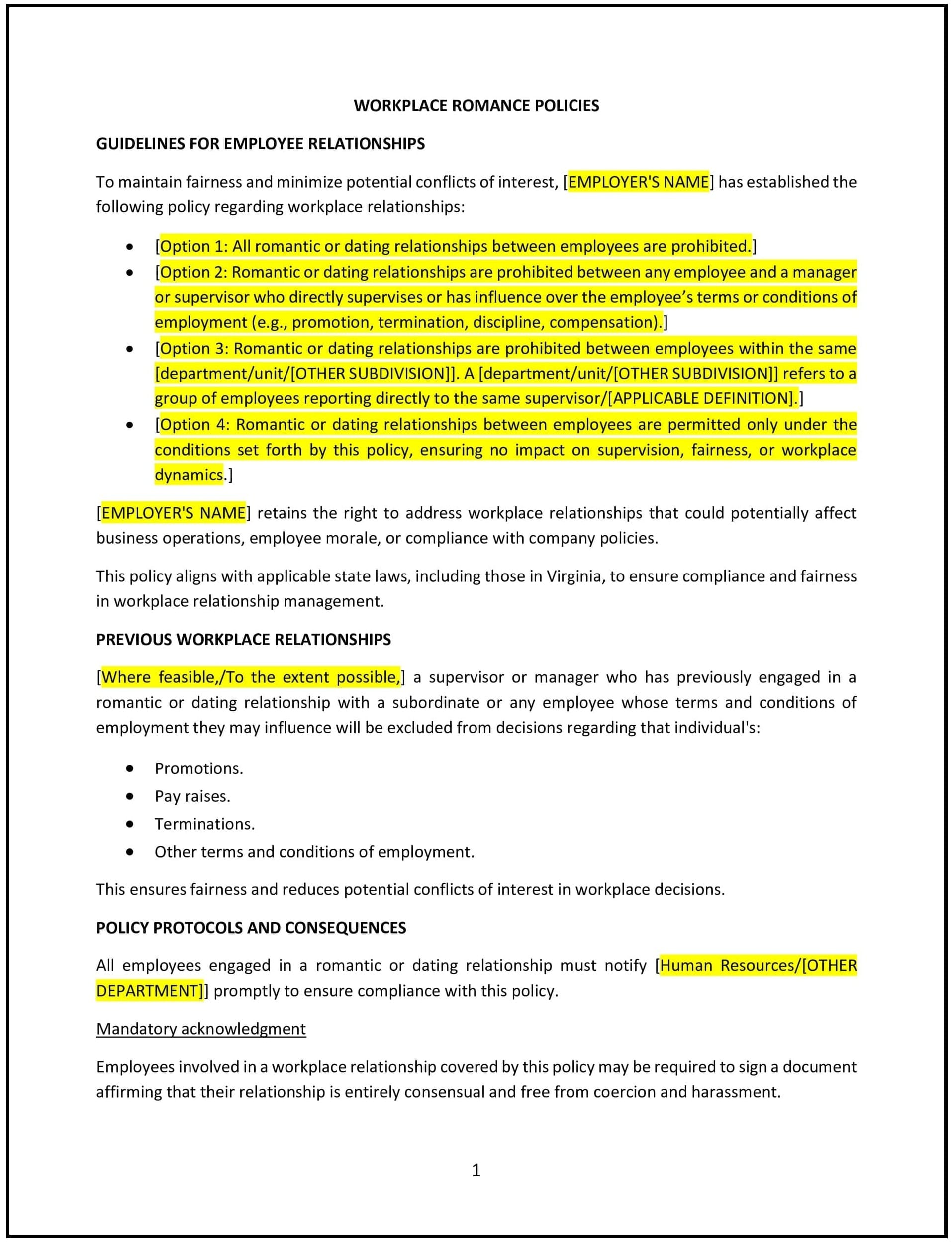Breastfeeding break policy (South Dakota): Free template

Breastfeeding break policy (South Dakota)
This breastfeeding break policy is designed to help South Dakota businesses support nursing mothers by providing reasonable break time and a private space to express milk. It outlines procedures for requesting breaks, duration of breaks, and maintaining a supportive environment.
By adopting this policy, businesses can promote employee well-being, enhance retention, and align with general best practices for workplace support.
How to use this breastfeeding break policy (South Dakota)
- Define eligibility: Specify which employees are eligible for breastfeeding breaks, such as nursing mothers.
- Establish break duration: Outline the maximum amount of break time allowed and frequency of breaks.
- Set request procedures: Provide steps for employees to request breastfeeding breaks, including required notice and approvals.
- Ensure private space: Specify the availability of a private, clean space for expressing milk.
- Train managers: Educate supervisors on handling breastfeeding break requests and maintaining workflow during breaks.
- Review and update: Assess the policy annually to ensure it aligns with evolving business needs and employee expectations.
Benefits of using this breastfeeding break policy (South Dakota)
This policy offers several advantages for South Dakota businesses:
- Promotes employee well-being: Supports nursing mothers in balancing work and personal needs.
- Enhances retention: Encourages employee loyalty by providing a supportive work environment.
- Reduces stress: Helps nursing mothers manage their responsibilities without compromising their health.
- Builds trust: Demonstrates a commitment to supporting employees’ personal circumstances.
- Supports reputation: Positions the business as a caring and inclusive employer in the community.
Tips for using this breastfeeding break policy (South Dakota)
- Communicate the policy: Share the policy with employees and include it in the employee handbook.
- Provide training: Educate managers on handling breastfeeding break requests and maintaining workflow during breaks.
- Monitor compliance: Regularly review break requests to ensure adherence to the policy.
- Address issues promptly: Take corrective action if break requests are mishandled or denied improperly.
- Update regularly: Assess the policy annually to ensure it aligns with evolving business needs and employee expectations.
Q: How does this policy benefit businesses?
A: By offering breastfeeding breaks, businesses can support employee well-being, enhance retention, and reduce stress.
Q: How long are breastfeeding breaks typically provided?
A: Breastfeeding breaks are often provided for 15-30 minutes, but this can vary depending on the business’s policy.
Q: Is a private space required for expressing milk?
A: Yes, businesses should provide a private, clean space for nursing mothers to express milk.
Q: Can breastfeeding breaks be extended in special circumstances?
A: Businesses may allow extended breaks in special circumstances, but this should be clearly outlined in the policy.
Q: How often should businesses review this policy?
A: Businesses should review the policy annually or as needed to ensure it aligns with evolving business needs and employee expectations.
This article contains general legal information and does not contain legal advice. Cobrief is not a law firm or a substitute for an attorney or law firm. The law is complex and changes often. For legal advice, please ask a lawyer.


